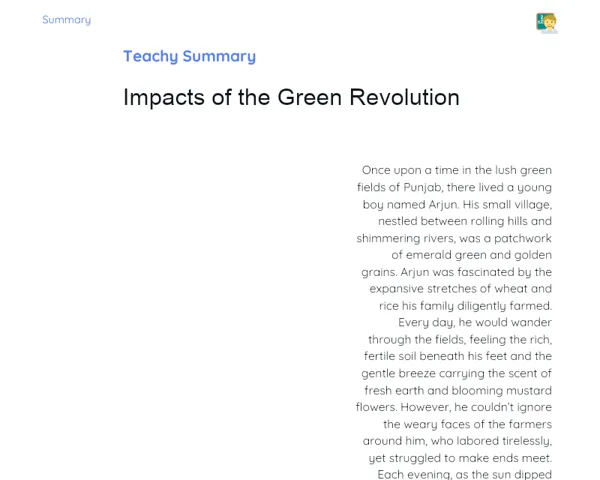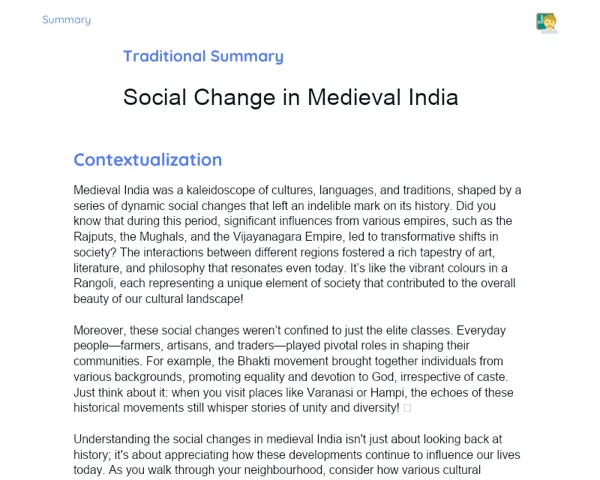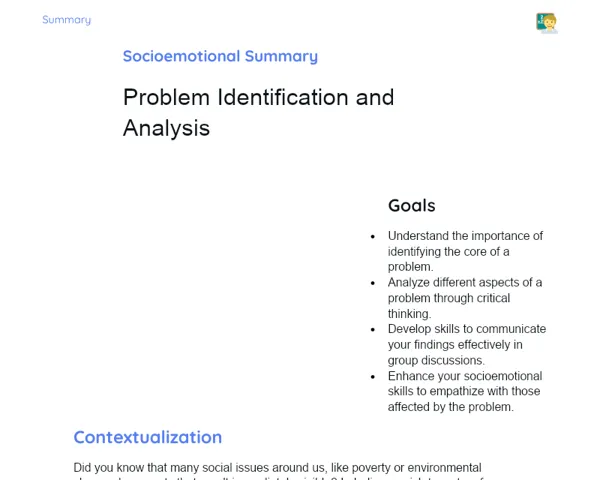Objectives
1. Understand the key events leading to the Indian National Movement from the 1870s.
2. Identify significant figures and their contributions to the movement.
3. Recognize the socio-political context that spurred the quest for freedom.
4. Analyze the impact of early movements and organizations on the freedom struggle.
Contextualization
Imagine a time when India was a vast land under colonial rule, with every street echoing the cries for independence. As we delve into the beginning of the Indian National Movement, we'll discover how ordinary people and visionary leaders ignited a flame of resistance against foreign domination. This was not just a struggle for territory, but a passionate quest for identity, culture, and the very soul of our nation. So, gear up, because understanding this crucial chapter in our history opens the door to appreciating the freedom we cherish today! ✊🇮🇳
Important Topics
The Socio-Political Context of the 1870s
The 1870s marked a pivotal time in India's struggle against colonial rule. The socio-political landscape was shifting with growing discontent among various factions of society. The British policies, including economic exploitation and social reforms, triggered widespread resentment. The introduction of discriminatory laws, such as the Arms Act of 1878, directly affected the rights of Indians. It was during this decade that the seeds of nationalism were sown, as educated Indians began to articulate their grievances and aspirations through petitions and public discourse. This environment paved the way for the formation of organizations that aimed to unite the population in their quest for independence.
-
Colonial Policies: The British economic policies led to the depletion of Indian resources, impacting agriculture and handicrafts. This exploitation created widespread poverty and unrest.
-
Emergence of National Consciousness: As more Indians became educated, they began to recognize their rights and the need for self-determination. This awakening of political consciousness was crucial for mobilizing support for the freedom struggle.
-
Formation of Organizations: The formation of groups like the Indian National Congress in 1885 can be traced back to the socio-political dissatisfaction of the 1870s. These organizations became the backbone of the Indian National Movement, providing a structured platform for voicing grievances and demands.
The Role of Key Figures
The beginning of the Indian National Movement was marked by several influential leaders who played a crucial role in shaping the course of history. Figures such as Dadabhai Naoroji, Bal Gangadhar Tilak, and Lala Lajpat Rai emerged as voices of the people, advocating for rights and political representation. Their efforts were vital in mobilizing the masses and articulating the aspirations of Indians. These leaders utilized various approaches, including petitions, speeches, and public meetings, to raise awareness and foster a spirit of unity among the diverse Indian populace. Their struggle was not only for political freedom but also for the revival of Indian culture and identity.
-
Dadabhai Naoroji: Known as the 'Grand Old Man of India', he highlighted the economic exploitation of India by the British in his work 'Poverty and Un-British Rule in India'. His arguments laid the foundational ideology for the freedom struggle.
-
Bal Gangadhar Tilak: He was one of the first leaders to call for 'Swaraj' (self-rule) and believed in the power of the masses. His slogan, 'Swaraj is my birthright,' became a rallying cry for nationalists.
-
Lala Lajpat Rai: A prominent leader in the Punjab region, he worked tirelessly to awaken Indian nationalism. His involvement in social issues and education helped mobilize a generation towards the freedom struggle.
The Impact of Early Movements
Early movements such as the Indian National Congress and various regional associations played a significant role in laying the groundwork for the larger freedom struggle. These movements were characterized by their demands for representation, civil rights, and constitutional reforms. The early activists not only gathered support from educated elites but also inspired the masses, spreading the message of nationalism across different strata of society. The initial focus on constitutional methods of protest set a precedent for future strategies, leading to more radical demands for complete independence as the movement evolved. Understanding these early movements helps us appreciate the gradual yet resolute buildup towards the ultimate goal of freedom.
-
Indian National Congress: Founded in 1885, it became the principal party representing Indian interests. Its early moderate stance sought reform rather than outright independence, attracting a wide range of support.
-
Regional Associations: Organizations like the Muslim League and the Hindu Mahasabha began to form, reflecting the diversity of Indian society. Their interactions contributed to shaping both communal identities and the national movement.
-
Petitions and Protests: Early activists utilized petitions to voice their concerns, demonstrating a methodical approach to political engagement. This established a framework for civil disobedience and protests that would become prominent later.
Key Terms
-
Swaraj: A term meaning 'self-rule,' popularized by nationalists like Bal Gangadhar Tilak. It emphasized the need for Indians to govern themselves.
-
Indian National Congress: A political organization established in 1885 aimed at gaining representation for Indians and addressing their grievances against British rule.
-
Nationalism: A political ideology that emphasizes collective identity, culture, and the quest for self-determination and independence from colonial rule.
For Reflection
-
What role do you think the socio-political environment of the 1870s played in shaping the early Indian National Movement? Reflect on how these factors might still impact movements today.
-
Consider the contributions of early leaders like Naoroji and Tilak. How do their ideas resonate with contemporary struggles for rights and representation in our society?
-
In what ways do you think the approach to activism has changed from the early movement to today's methods? Discuss the importance of modern technology in shaping national movements.
Important Conclusions
-
The Indian National Movement began as a response to colonial exploitation and discriminatory policies in the 1870s.
-
Key figures like Dadabhai Naoroji, Bal Gangadhar Tilak, and Lala Lajpat Rai played instrumental roles in mobilizing the Indian populace and articulating their demands.
-
The formation of organizations like the Indian National Congress in 1885 marked the beginning of a structured movement aimed at securing rights and representation for Indians.
-
Early movements set the stage for more radical demands and strategies that would characterize the freedom struggle in the years to come.
-
Understanding this historical context not only enriches our knowledge of India's past but also inspires us to engage in the present-day discussions on rights, representation, and national identity.
To Exercise Knowledge
Create a creative timeline of the early Indian National Movement. Mark key events, figures, and organizations discussed in class. Include illustrations, quotes, or symbols that represent each point. This visually stimulating project will help consolidate your understanding of the movement!
Challenge
Can you create a persuasive speech that one of the early leaders might have given to rally support for the movement? Use historical facts and passionate language to capture the essence of their struggle for freedom. Share it with your family or friends and see if you can ignite their interest in India's history!
Study Tips
-
Connect it to your world: Think about how the ideas of self-rule and representation apply to current events in India.
-
Group study: Discuss the key points of the lesson with classmates. Teaching each other can reinforce your own understanding.
-
Use multimedia: Watch documentaries or read stories about the Indian National Movement to visualize the history beyond the textbooks.



